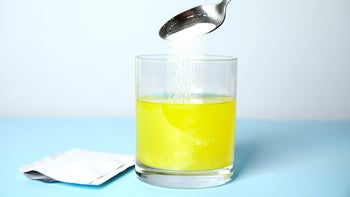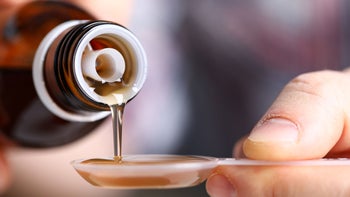
5 Natural Constipation Remedies for Kids
Key takeaways:
Home remedies can relieve constipation for most kids.
Natural remedies for constipation include certain fruit juices and high-fiber foods.
You can help prevent constipation in kids by making diet changes and developing the right “potty-time” routine.
Table of contents

It’s normal for kids to poop anywhere from three times per week to three times per day. Constipation is when bowel movements happen less often than usual, or stools are hard and difficult to push out. This means that a child who passes a hard, pellet-like stool every day has constipation. But someone who passes a soft stool every 3 days is not.
What should you do when your kid has trouble going to the bathroom?
Pediatricians often recommend natural remedies for constipation first. Let’s look at natural ways to relieve constipation fast and how you can prevent your child from becoming constipated in the first place.
1. Prunes/prune juice [Prunes]
Prunes and prune juice have long been known to help with constipation. But how do they work?
A study in adults identified three components of prune juice that help you poop:
Pectin: This is a type of soluble fiber that helps soften stools.
Sorbitol: This sugar alcohol has a laxative effect.
Polyphenols: These plant-based compounds support healthy gut bacteria and regular bowel movements.
Search and compare options
Many fruits and fruit juices that help with constipation have some combination of these helpful elements.
You can give undiluted prune juice to relieve your child’s constipation. How much juice depends on their age. As an easy rule, give no more than 1 oz of juice for every month of age. But don’t give more than 4 oz a day to any child over 4 months. That can lead to diarrhea.
2. Apricots/apricot juice
If your child doesn’t like prune juice, there are other fruits and fruit juices that can help relieve constipation. One study in adults found that apricot juice helped with bowel cleanout before a colonoscopy. Like prunes, apricots have fiber and sorbitol to help your kid poop.
Try fresh or dried apricots or apricot juice to help with constipation.
3. Pears/pear juice
Pears are another great source of fiber. Pears and pear juice also have a lot of fructose. Fructose is a sugar naturally found in fruit that can have a laxative effect.
Serve your child sliced pears with the skin on. Or have them drink a few ounces of pear juice when they’re backed up.
4. Apples/apple juice
Apples are another kid favorite. They have lots of pectin, which helps stools to form.
Try adding unpeeled apple slices for added fiber. You can also give a few ounces of undiluted apple juice. Do this daily until your child’s bowel movements improve. If they aren’t better in a few days, contact your healthcare professional for guidance.
5. Kiwi
This fruit has lots of fiber. In addition, kiwi has a unique protein called actinidin that helps aid digestion. A recent small study in adults found that kiwi worked just as well as prunes and psyllium (the active ingredient in Metamucil) to treat constipation. It also had the added benefit of fewer side effects.
Try giving this fruit to your kids as a puree or cutting it into bite-size pieces. You can eat the skin that covers kiwi for added fiber. Just make sure to wash it thoroughly first.
Are there any natural ways to keep your child from getting constipated?
Yes! After all your efforts to relieve your child’s constipation, you want to make sure they don’t develop it again. Luckily, there are natural ways to keep your child from getting constipated.
Let’s look at five things that can keep your child’s bowel habits regular and stool soft.
1. Hydration
Water helps with many body processes, including normal bowel function. A review found that children and teens who don’t drink enough fluids are more likely to have constipation.
If your body doesn’t get enough fluid, it can pull water from your gut. That can make stools hard and dry.
How much water your child should drink depends on their age and how active they are. Encourage drinking water over other drinks like soda, tea, or other sweet beverages.
2. Fiber
You’ve probably heard that fiber helps with constipation. How does it work?
Fiber is a food that your body doesn’t digest. Fiber can be either soluble or insoluble. Soluble fiber dissolves in water and helps soften hard stools. Insoluble fiber doesn’t dissolve in water and helps stimulate movement in the gut. These effects make stool softer, bulkier, and easier to pass.
It’s best to get more fiber by eating high-fiber foods, such as:
Fruits and vegetables
Beans
Whole grains, oats
Nuts and seeds
Young kids aren’t always great at eating high-fiber foods. Here are some tips to get these foods into their diet:
Chop up veggies and add them to a favorite like mac and cheese or on top of pizza.
Make sandwiches or French toast with whole-grain bread.
Look for a cereal that lists whole grains as one of the first ingredients.
Try whole-grain pasta or brown rice.
Put peanut butter on fruits like apples or veggies like celery.
Make muffins with flaxseed, fruits, or vegetables baked in.
If you can’t get your child to eat these foods, you might consider a fiber supplement. Talk with your healthcare professional before starting any over-the-counter product. And be sure to have your child drink plenty of water with any fiber supplement. If they don’t, it can make constipation worse.
3. Probiotic-rich foods
Studies have shown that adults with constipation tend to have less healthy gut bacteria. That’s why eating probiotics may help promote regular bowel movements. Probiotics are foods that contain certain live microorganisms. In adults, eating probiotics can help regulate bowel movements by:
Improving gut motility or peristalsis
Shortening the time stool needs to move through the gut
Making it easier to pass stools
Decreasing stomach pain
But so far, studies in kids have not shown conclusive evidence that probiotics help prevent constipation. This may be due to differences in the gut bacteria of children and adults.
Probiotic-rich foods that a child might enjoy include yogurt or some cheeses. But watch dairy intake. In some children, too much dairy can worsen constipation.
4. Exercise
Exercise has a lot of health benefits for people of all ages.
A review of studies in adults found that exercise may help relieve constipation. Experts aren’t exactly sure how that happens. But researchers think exercise may help:
Stimulate the nerves that help move stool through the gut
Move the bowels. Physical activity helps muscles contract and pass stool through the gastrointestinal tract.
Studies in toddlers and older children have found that active kids had a lower risk for constipation. Toddlers should be active throughout the day, and older kids should have at least 60 minutes of moderate activity each day.
5. Optimize potty time
Developing a regular potty-time routine can help prevent constipation.
You can train your bowels to move each day by taking advantage of a natural body process called the gastrocolic reflex. When food enters the stomach, the lower bowels contract, making way for incoming food to be digested. About 20 minutes after breakfast, try having your child sit for 5 minutes on the toilet to see if they have a bowel movement. In time, you can train their bowels to go each morning.
Proper positioning can also help kids poop. The squatting position is best. Set your kids up for success by:
Supporting their feet. For young children, that means using a toilet training potty on the floor. For older kids using a toilet, put a stool under their feet.
Making sure their knees are above their hips. That position relaxes the pelvic muscles.
Moving underwear and pants around the ankles so that legs can spread apart
Keeping potty time pressure-free so your child can relax
The bottom line
Constipation in kids is a common problem. Most healthcare professionals recommend trying natural remedies for constipation first. Fruits like prunes, apples, and pears, and their juices work best. If things aren’t improving after a few days, discuss constipation medicine for kids with a pediatrician.
You can help prevent constipation by encouraging a regular toileting routine, making sure kids drink enough water and get plenty of exercise. It also helps to include and increase high-fiber foods in your child’s diet. Keep potty time fun! Making it stress-free will help your child relax and encourage a healthy bowel routine.
Why trust our experts?



References
American College of Gastroenterology. (n.d.). Constipation in children.
Blanco-Pérez, F., et al. (2021). The dietary fiber pectin: Health benefits and potential for the treatment of allergies by modulation of gut microbiota. Current Allergy and Asthma Reports.
Boilesen, S. N., et al. (2017). Water and fluid intake in the prevention and treatment of functional constipation in children and adolescents: Is there evidence? Jornal de Pediatria.
Bourkheili, A. M., et al. (2021). Effect of cow’s-milk-free diet on chronic constipation in children; a randomized clinical trial. Caspian Journal of Internal Medicine.
Centers for Disease Control and Prevention. (n.d.). Physical activity for children: An overview.
Chey, S. W., et al. (2021). Exploratory comparative effectiveness trial of green kiwifruit, psyllium, or prunes in US patients with chronic constipation. The American Journal of Gastroenterology.
Dong, M., et al. (2023). Effect of probiotics intake on constipation in children: An umbrella review. Frontiers in Nutrition.
Driessen, L. M., et al. (2013). Preschool physical activity and functional constipation. Journal of Pediatric Gastroenterology and Nutrition.
Gao, R., et al. (2019). Exercise therapy in patients with constipation: A systematic review and meta-analysis of randomized controlled trials. Scandinavian Journal of Gastroenterology.
He, Y., et al. (2022). Efficacy of probiotic compounds in relieving constipation and their colonization in gut microbiota. Molecules.
HealthyChildren.org. (2022). How can I tell if my baby is constipated? American Academy of Pediatrics.
Koyama, T., et al. (2022). Prune juice containing sorbitol, pectin, and polyphenol ameliorates subjective complaints and hard feces while normalizing stool in chronic constipation: A randomized placebo-controlled trial. The American Journal of Gastroenterology.
Malone, J. C., et al. (2023). Physiology, gastrocolic reflex. StatPearls.
McRorie, J. W., Jr., et al. (2016). Understanding the physics of functional fibers in the gastrointestinal tract: An evidence-based approach to resolving enduring misconceptions about insoluble and soluble fiber. Journal of the Academy of Nutrition and Dietetics.
Modi, M. M., et al. (2019). Implementation of a defecation posture modification device. Journal of Clinical Gastroenterology.
Reiland, H., et al. (2015). Systematic review of pears and health. Nutrition Today.
Richardson, D. P., et al. (2018). The nutritional and health attributes of kiwifruit: A review. European Journal of Nutrition.
Seidenfaden, S., et al. (2017). Physical activity may decrease the likelihood of children developing constipation. Acta Paediatrica.
Tantawy, S. A., et al. (2017). Effects of a proposed physical activity and diet control to manage constipation in middle-aged obese women. Diabetes, Metabolic Syndrome and Obesity.
Yaşar, B., et al. (2017). Adding stewed apricot juice to sena improves the right-side and overall colon cleansing quality for colonoscopy preparation. Functional Foods in Health and Disease.

























